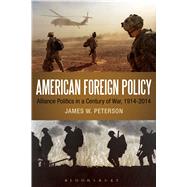The text aims to uncover the roots of the United States' near perpetual involvement in war since the beginning of WWI in 1914. Using alliance politics as the main framework of analysis, it offers a new interpretation that contrasts with the traditional views that war is an interruption of the American foreign policy emphasis on diplomacy. Instead, it posits that war has been the norm during the past century while peaceful interludes were but a time of respite and preparation for the next conflict.
After a thorough discussion of the concepts of alliance building and the containment doctrine, the work then addresses such themes as the alliance networks used to confront German and Japanese powers during the early 20th century wars, the role of alliances in containing the Soviet Union during the Cold War, the creation of alliances to restrict and defeat rogue state powers, and whether they were useful when dealing with the challenges posed by terrorism in the post-9/11 world.
Each chapter features case studies, a summary, references, and web links. In addition, the book utilizes primary sources, such as U.S. Department of Defense and State documents and presidential statements. An exhaustive study of containment and alliance, this text will be an essential resource for anyone studying U.S. foreign policy, international relations, and national security.








